[am4show have='p8;p9;p11;p38;p72;p77;p92;' guest_error='Guest error message' user_error='User error message' ]
Welcome to the Advanced e-Camp Projects!
When I first started teaching K-12 over a decade ago, I offered an advanced camp just for High School kids, called "Camp Kinetic". We had so much fun making rockets from toilet paper and coat hangers, underwater submersibles from plumbing parts, and robots from cell phones parts. The rockets did somersaults at liftoff when the kids made their rockets too nose-heavy, the submersibles sank when the water tight seals leaked, and the robots danced off the table when we weren't looking. Since then, I've discovered the secrets to the projects so now they work every time, and your kids will get to experience all the fun while still being engaged when building something challenging.
The projects listed below are the ones I teach to high school kids during my live workshops and advanced level camps. Each project spans a couple hours to several days, and a couple of the projects (the analog and digital electronic labs and the robot near the bottom of this page) will take several weeks. This way, you can feel good about having their learning going year-round, but at the same time, it won’t seem like regular school work to them, so they can have all the fun that a summer break should be. Like the rest of the e-science program, summer e-Camp can be done on your schedule. You can go in any order and do the projects that interest you most. You'll find shopping lists with each experiment along with links to order the unusual or specialty parts online. Enjoy the projects this summer!
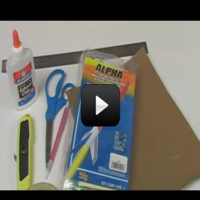 Build and Fly a Real Alpha Rocket The excitement that building rockets creates, the passion it can inspire in kids, and the wonder from the neighbors as they pick your rockets off the roof... it will make your rocketry adventure memorable for a lifetime.
Build and Fly a Real Alpha Rocket The excitement that building rockets creates, the passion it can inspire in kids, and the wonder from the neighbors as they pick your rockets off the roof... it will make your rocketry adventure memorable for a lifetime.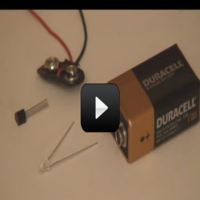 Alien Detector This simple FET circuit is really an electronic version of the electroscope .This "Alien Detector" is a super-sensitive static charge detector made from a few parts from Radio Shack.
Alien Detector This simple FET circuit is really an electronic version of the electroscope .This "Alien Detector" is a super-sensitive static charge detector made from a few parts from Radio Shack.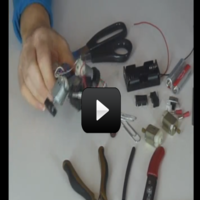 Superfast Bug Bot If you like tiny robots, then this one is for you! Powered by cheap hobby motors, this fast little robot zips 'round and avoids obstacles using momentary switches and an idler wheel for a tail.
Superfast Bug Bot If you like tiny robots, then this one is for you! Powered by cheap hobby motors, this fast little robot zips 'round and avoids obstacles using momentary switches and an idler wheel for a tail.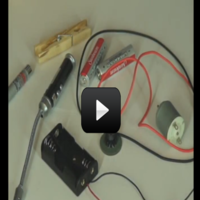 Advanced Laser Light Show When you shine a laser beam onto a spinning mirror, it makes the laser dot on the wall spin in a circle, ellipse, or oval. The more mirrors you add, the more spiro-graph-looking your projected laser dot gets.
Advanced Laser Light Show When you shine a laser beam onto a spinning mirror, it makes the laser dot on the wall spin in a circle, ellipse, or oval. The more mirrors you add, the more spiro-graph-looking your projected laser dot gets.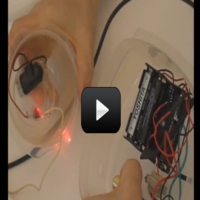 Space-Age Laser Communicator You can ride music on a laser beam! The first thing we're going to do is take the music from your iPOD, stereo, or MP3 player and transmit it on a laser beam to a detector on the other side. The detector has a earphone attached, so someone else can listen to the music from your laser from across the room.
Space-Age Laser Communicator You can ride music on a laser beam! The first thing we're going to do is take the music from your iPOD, stereo, or MP3 player and transmit it on a laser beam to a detector on the other side. The detector has a earphone attached, so someone else can listen to the music from your laser from across the room. Underwater R.O.V. Robot In the late 1980s, scientists needed a way to explore the remains of the Titanic , and a lower-cost, lighter weight version design was developed. ROVs are designed to be remote extensions of the operator.
Underwater R.O.V. Robot In the late 1980s, scientists needed a way to explore the remains of the Titanic , and a lower-cost, lighter weight version design was developed. ROVs are designed to be remote extensions of the operator.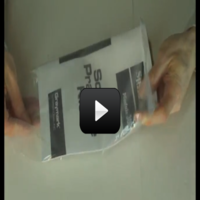 Learn How to Solder a Police Siren Once you have the hang of soldering (I'll show you how), we'll make a working siren. It makes sound and is just wired to make different frequencies take turns by charging capacitors at different rates.
Learn How to Solder a Police Siren Once you have the hang of soldering (I'll show you how), we'll make a working siren. It makes sound and is just wired to make different frequencies take turns by charging capacitors at different rates.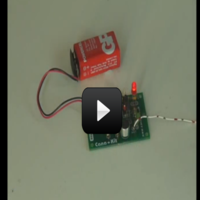 Wireless FM Transmitter (the "Bug") This is a really cool one. You're actually going to build a miniature radio station. You can broadcast your voice or music to a regular FM radio. It just has a very short range (about 100 feet, or 30 meters).
Wireless FM Transmitter (the "Bug") This is a really cool one. You're actually going to build a miniature radio station. You can broadcast your voice or music to a regular FM radio. It just has a very short range (about 100 feet, or 30 meters).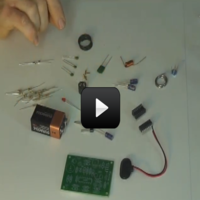 Door Knob Touch Alarm This is my favorite burglar alarm because it's innocent-looking, hair-triggered, and completely obnoxious. When an unsuspecting thief comes into your room, the alarm sounds as soon as they touch the other side of the door knob... and presto! You caught your burglar.
Door Knob Touch Alarm This is my favorite burglar alarm because it's innocent-looking, hair-triggered, and completely obnoxious. When an unsuspecting thief comes into your room, the alarm sounds as soon as they touch the other side of the door knob... and presto! You caught your burglar.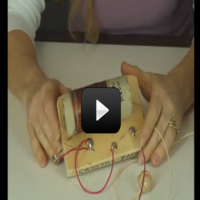 Crystal Radios A crystal radio is among the simplest of radio receivers - there's no battery or power source, and nearly no moving parts. The source of power comes directly from the radio waves (which is a low-power, low frequency light wave) themselves.
Crystal Radios A crystal radio is among the simplest of radio receivers - there's no battery or power source, and nearly no moving parts. The source of power comes directly from the radio waves (which is a low-power, low frequency light wave) themselves.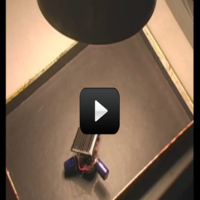 Beam Robots: The Engine Some BEAM robots skitter, dance, flash, jump, roll, or walk, and most are solar powered. The result is a fast responding robot made of old cell phone parts that can fit inside your hand.
Beam Robots: The Engine Some BEAM robots skitter, dance, flash, jump, roll, or walk, and most are solar powered. The result is a fast responding robot made of old cell phone parts that can fit inside your hand.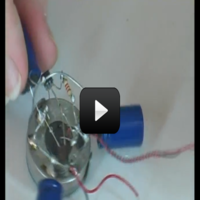 Beam Robots: Trimet This is a great little robot that really shows how eccentric drives can be used for more than just the vibrate mode on your cell phone. Start with this one if you're new to BEAM robots!
Beam Robots: Trimet This is a great little robot that really shows how eccentric drives can be used for more than just the vibrate mode on your cell phone. Start with this one if you're new to BEAM robots! Beam Robots: Solar Roller This is one of the coolest applications of renewable energy to come about in recent years. BEAM stands for Biology, Electronics, Aesthetics, and Mechanics. It basically refers to a class of robots that instead of having complicated brains, rely on nervous-system type of sensors to interact with their world.
Beam Robots: Solar Roller This is one of the coolest applications of renewable energy to come about in recent years. BEAM stands for Biology, Electronics, Aesthetics, and Mechanics. It basically refers to a class of robots that instead of having complicated brains, rely on nervous-system type of sensors to interact with their world.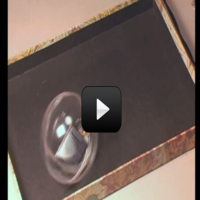 Beam Robots: MiniBall This little robot is housed in a clear plastic ball, so when the robot moves, the whole thing rolls around like a hamster in a ball. The cool part is that it will never get stuck in a corner as long as it's in sunlight, due to how its designed.
Beam Robots: MiniBall This little robot is housed in a clear plastic ball, so when the robot moves, the whole thing rolls around like a hamster in a ball. The cool part is that it will never get stuck in a corner as long as it's in sunlight, due to how its designed.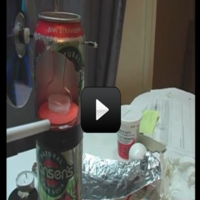 Soda Can Stirling Engine Developed in 1810s, this engine was widely used because it was quiet and could use almost anything as a heat source. This kind of heat engine squishes and expands air to do mechanical work. There's a heat source (the candle) that adds energy to your system, and the result is your shaft spins (CD).
Soda Can Stirling Engine Developed in 1810s, this engine was widely used because it was quiet and could use almost anything as a heat source. This kind of heat engine squishes and expands air to do mechanical work. There's a heat source (the candle) that adds energy to your system, and the result is your shaft spins (CD).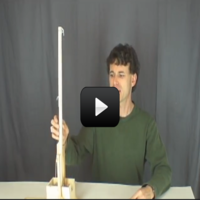 Trebuchet Trebuchets are really levers in action. You'll find a fulcrum carefully positioned so that a small motion near the weight transforms into a huge swinging motion near the sling.
Trebuchet Trebuchets are really levers in action. You'll find a fulcrum carefully positioned so that a small motion near the weight transforms into a huge swinging motion near the sling.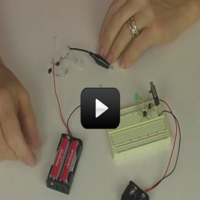 Flashlight Laser Tag While real laser tag games actually never use lasers (they use infrared beams, like in your remote control) this version of laser tag DOES. This game uses a simple two-transistor latching circuit design. If you've never built this kind of circuit before, it's a perfect first-step into the world of electronics.
Flashlight Laser Tag While real laser tag games actually never use lasers (they use infrared beams, like in your remote control) this version of laser tag DOES. This game uses a simple two-transistor latching circuit design. If you've never built this kind of circuit before, it's a perfect first-step into the world of electronics. Potato Cannon These nifty devices give off a satisfying *POP!!* when they fire and your backyard will look like an invasion of aliens from the French Fry planet when you're done.
Potato Cannon These nifty devices give off a satisfying *POP!!* when they fire and your backyard will look like an invasion of aliens from the French Fry planet when you're done.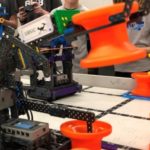 Robotics Go beyond LEGOs and get started building real robots that use can enter in local competitions and compete with other robot builders! We'll be posting more about this in July, so stay tuned!
Robotics Go beyond LEGOs and get started building real robots that use can enter in local competitions and compete with other robot builders! We'll be posting more about this in July, so stay tuned! Go-karts can be gravity powered (without a motor) or include electric or gas engines. We're going to make a gravity powered derby racer that is so simple to make, you'll be riding around the same day you start building it. Click here for shop list.
Go-karts can be gravity powered (without a motor) or include electric or gas engines. We're going to make a gravity powered derby racer that is so simple to make, you'll be riding around the same day you start building it. Click here for shop list.[/am4show]
